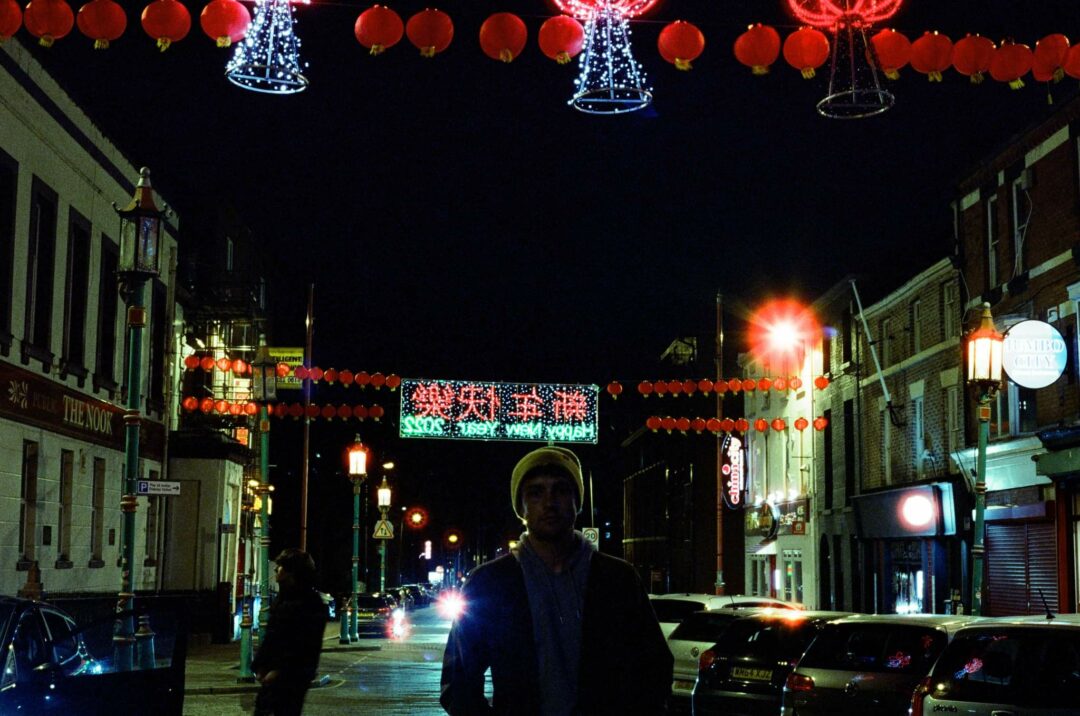This week, we sat down with Michael Richard Beirne to explore the depths of his unique approach to music showcased in his two-part LP, The Haunted.
Since 2020, Beirne has transitioned from crafting experimental soundscapes to composing structured, narrative-driven dark folk vignettes, influenced by Nick Cave and seminal albums such as Radiohead’s In Rainbows, which shape his distinct sonic identity. Beyond the melodies, Beirne intertwines his Catholic beliefs, addressing themes of redemption, the nature of evil, and divine love. As he shifts from darker, introspective themes to the exuberant and vibrant energies expected in future projects, Michael Richard Beirne is forging a powerful auditory narrative that resonates with deep personal and spiritual truths.
Michael Richard Beirne, thanks for taking the time to sit down with us and discuss your unique approach to lyricism and sonic expression exhibited through your two-part LP, The Haunted. How did you hone your clearly cultivated songwriting style?
Thank you for the opportunity of this interview & for your complimentary words.
I’ve been writing songs since 2020 when my brother gave me a new laptop with music-making software, a synthesiser & a microphone. The ability to write shorter, structured, narrative songs arrived after an extensive initial 2.5-year period of pure research, sample-collection, & eclectic loop-shopping, during which I made bizarre, rambling, experimental non-songs to find a way with lyrics & various ways of deploying my voice. At the end of 2022, I had a few songs which suggested the shape of a pair of albums, one set in Ireland and one set in Malta.
The Haunted is as sombre as it is strikingly Avant-Garde; the soundscapes give Nick Cave a run for his money. Who or what are your biggest influences and how do they fit into your distinct sonic identity?
Nick Cave & the Bad Seeds are undoubtedly the single most important influence. I find inspiration in the soundscapes of particular tracks; for example, the cavernous, epic feeling of Song of Joy from the album Murder Ballads, the enormous eeriness of Do You Love Me? Part 2 from Let Love In, as well as the narrative complexity & storytelling in Oh My Lord from No More Shall We Part. These songs suggest a scope and vast ambition to which I aspire.
Beyond that, I am really inspired by the idea of the album itself as a consummate artistic object and statement of belief. In this respect, I aspire to create something as integrated as In Rainbows by Radiohead, Merriweather Post Pavillion by Animal Collective, Skeleton Tree by the Bad Seeds, & Speakerboxxx/ Love-Below by Outkast. These albums are scorchingly eclectic, varied, and unpredictable, and yet achieve a holistic and coherent singular vision. They transcend individual songs & become a unified narrative, harnessing multiple modes of expression.
As a Catholic, how important is it for you to incorporate your religion into your music?
I am strongly committed to ensuring that my music both directly & indirectly describes God (in that my songs are condemnatory of evil) and Jesus Christ (in that they are expressive of a joyful, redeemed universe which is founded on forgiveness & love). To express this belief, I take cues from traditional Irish folk tunes, as well as from gospel music, & gospel-infused funk & hip-hop.
You’ve teased that there are more releases in the pipeline; what themes will be explored in your future projects?
Part 1 is very much a kind of story of emergence from depressive, anxious, psychotic & sinful patterns of thought into hope & forgiveness. Part 2 is more directly a celebration of joyful adventure in a happier, more redeemed state of mind in a futuristic world.
Part 3 is very much about the idea of the interaction between believers & non-believers, and communication. This Part 3 is therefore, in Christian terms, a kind of “Holy Spirit” album; the songs are designed to be more obviously catchier, groovier, and infectious, with strong rhythm sections & boom-bap.
How does your music usually come to fruition?
Songs are usually built from just a single chord progression or electric bass riff. I give that a title which suggests some sort of character & dramatic narrative. I then record improvised singing, rapping & general wailing over the top. I listen back to these improvised takes until I begin to hear in them the shape of the words. I type these up as I listen back to the improvisations. Then I repeat the process through many iterations, adding in sonic details. I listen to the song for weeks or even months to iron out all the lyrics.
When are you most creatively inspired?
I’m most inspired by just a song’s title & the feeling that a loop or sample contains within it a hidden story & personality. It is as if the song already exists in a single note & the import of a single word.
How do your debut LP and your forthcoming releases fit into your creative ambitions?
My ambition is simply to make albums that in some way try to measure up to my favourite records and be like the kind of records that my father introduced me to. He introduced me to Songs of Leonard Cohen, Nebraska by Springsteen, and the Pogues’ Rum, Sodomy & The Lash, as well as the Johnny Cash American records. All I hope is that my albums will form a small part of the history of music and that they can exist alongside those timeless albums on platforms such as Spotify & Apple. My other main purpose is to share my gratitude for my life and my belief in Jesus.
–
Stream Part 1 and Part 2 of Michael Richard Beirne’s Haunted LP on Spotify.
Connect with the artist on Instagram.
Interview by Amelia Vandergast

